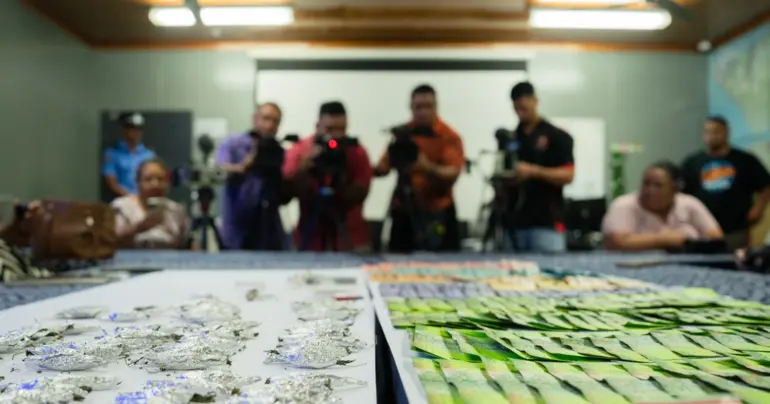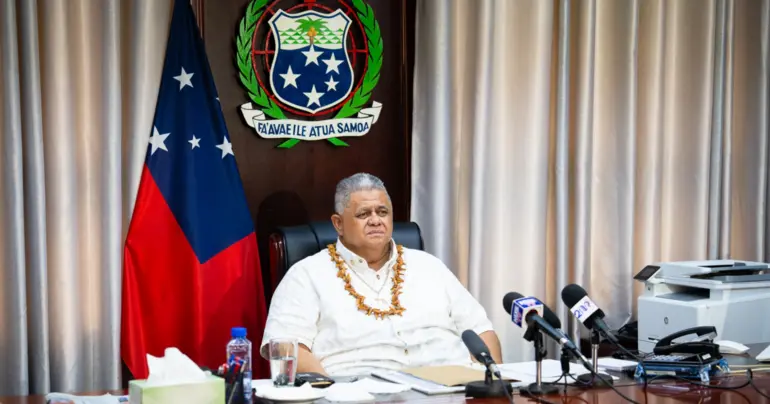Physician offers pandemic control opinion
 By Sapeer Mayron
•
12 July 2020, 1:00PM
By Sapeer Mayron
•
12 July 2020, 1:00PM
The best way to prevent or control the next global pandemic is by marrying public health and animal health surveillance.
That's the warning from World Health Organisation (W.H.O.) Pacific health security expert, Dr. Angela Merianos.
In a presentation on the intersection of human and environment health, Dr. Merianos said 75 per cent of emerging infectious diseases come from animals, and they all have the potential to cause widespread social, economic and health problems for society.
“There is a great risk if we do nothing in terms of institutional preparedness and response for health security strengthening, but also working with communities to build and sustain resilience to these infectious disease threats,” she said.
It means information sharing across the public health and agriculture sectors, including dealing with antibiotics control and data gathering.

“Managing these risks often occurs within the context of competing agendas and priorities across human health, livestock, wildlife, ecology, and the public versus the private sectors,” Dr. Merianos explained.
“So it isn’t necessarily simple for everybody who is a key stakeholder to come together and not only agree on what is important but how to manage that successfully.”
Dr. Merianos is a public health physician with W.H.O. South Pacific Division of Pacific Technical Support and is the Team Coordinator for Pacific Health Security, Communicable Diseases and Climate Change.
She said as well as coordinated better between health sectors both human and animal, research needs to be more focused on the animal vectors that harbour disease and how those disease end up in humans.
Longitudinal studies, mathematical models and looking at the conditions of when animals shed their viruses leading to “spillover events” will be part of that.
“These studies are difficult to execute but they are important to guide prevent and control efforts in the long term,” the doctor said.
Specifically in the Pacific, diseases like brucellosis which begins in cattle and can spread to humans, leptospirosis which is a major endemic environmental disease in the region, and fish diseases like ciguatera are all diseases that originate in animals that cause human disease.
“Locally acquired zoonotic diseases may be of low incidence in the Pacific island countries and areas but establishing inter-sectoral relationships before the next big event really requires a well-coordinated response,” Dr. Merianos said.
“These relationships need to be built before an emergency.”
When it comes to managing the community response, governments and public health workers need to understand how communities relate to the animals around them and why they might not be ready to change their ways.
Bats for example are especially effective reservoirs for infectious disease, because they carry many diseases that don’t make the bats themselves sick. But they can pass them onto other mammals, who in turn can give them to humans.
“Human behaviour drives epidemics and I can’t emphasis this point enough.
“There is a central role of risk communication, community engagement and understanding the social, economic, political drivers behind poor decisions or decisions that may place us at risk of new emerging infectious diseases and failures to be able to quickly contain and control outbreaks.”
Dr. Merianos was speaking on a panel discussion on One Health, how a healthy environment can mean healthy humans. It was the final panel in a series of discussions hosted by the Secretariat of the Pacific Regional Environment Programme on Transitioning to a Post Pandemic Pacific.
Tags
 By Sapeer Mayron
•
12 July 2020, 1:00PM
By Sapeer Mayron
•
12 July 2020, 1:00PM











